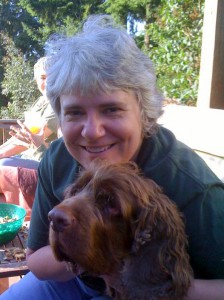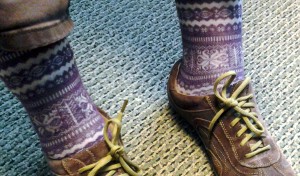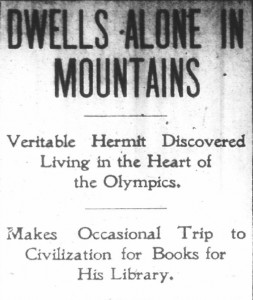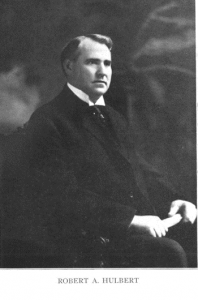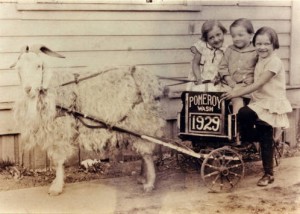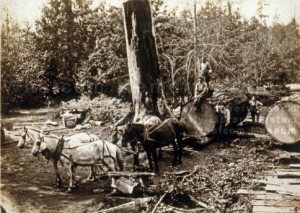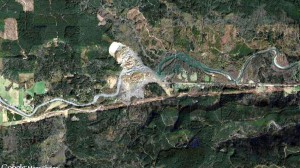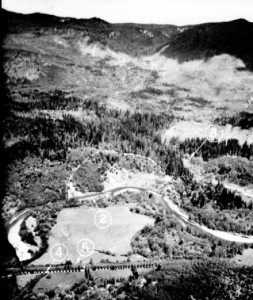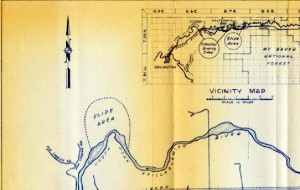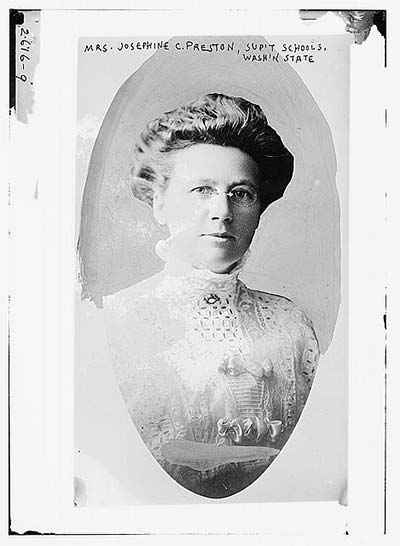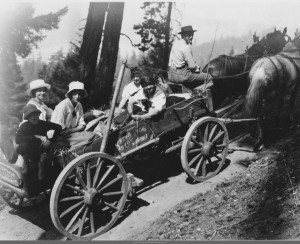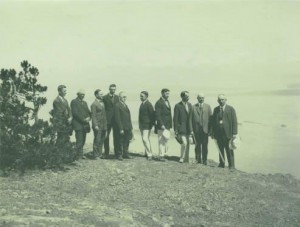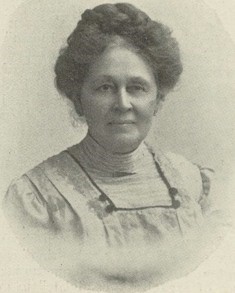From the desk of Marlys Rudeen:
A sampling of the local news from the Colville Examiner from Oct. 31, 1907-Jan. 1908 provides a vivid view of life in the north half of Stevens County. One thing that stands out is that the Colvillians were a traveling bunch. They visited and were visited on a regular basis, travelling to family and friends in other small towns, the big city of Spokane, and relatives in the Midwest or eastern states. Departures and arrivals are noted carefully in the local sections of the paper. 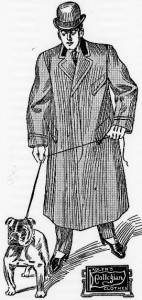
The editor, J. C. Harrigan, also includes articles and short snippets on roads, railroads, mines, church events, clubs, appointments of government officials, and entertainments. Births are welcomed, marriages celebrated, and deaths mourned. The overall picture is of a vigorous, social community that is busy laboring, building businesses, and seeking entertainment.
I’ve recorded below some bits that caught my eye, but I encourage you to visit the Colville Examiner on your own through Chronicling America Choose the browse option, choose a year and an issue, and dive in.
Nov. 9, 1907
p. 13 “Lizzie Paschilke, who enjoys the unenviable reputation of being under indictment for horse stealing, entered a plea of guilty in the Superior Court last Saturday and was sentenced to a term in the state industrial school in Chehalis. Her mother was convicted of a similar charge in the Spokane County court last week and sent to the state penitentiary.”
“George H. Bevan of Kettle Falls was in Colville Thursday. Mr. Bevan is a road commissioner… He is also a democrat and has no hesitation in letting it be known.”
Nov. 16, 1907
p. 11 “The Colville high school football team met defeat at Coeur d’Alene last Saturday, but by a smaller margin than that of the previous game, which shows our boys are improving with practice…” 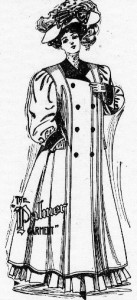
Nov. 30, 1907
p. 17 “ Chewelah possesses a dancing school which meets every Thursday evening at the Odd Fellows Hall…”
Dec. 7, 1907
p. 13 “For the benefit of any persons interested, it is announced that the cells for the new county jail will not be installed before the first of January. Of this take due notice and govern yourselves accordingly, for the time cometh when Sheriff Graham will not be obliged to sit on a nail keg with a shot gun all night to keep prisoners from escaping from the old fort building.”
Dec. 14, 1907
p. 7 “The Ungathered Spinsters will hold their annual state convention some time in January. Watch for date.”
p. 17 “The Echo basket ball team is practicing twice a week and is busily engaged at all times in studying the rules of this popular indoor sport. The great interest manifested thus far found expression in an exceptionally forcible argument last Sunday.”
Jan. 4, 1908
p. 13 “The moving picture subjects at the opera house this week are: The Adventuress, Love’s Tragedy, Following in Father’s Footsteps, The Bargain Fiend, An Artful Husband, How to Cure a Cold and Playing Pranks on the Gardener.”
Jan. 25, 1908
p. 13 “ Notice has been served upon the unsuspecting public of Colville that unless police interference is made, the Colville Imperial Minstrel Club will give its first series of gigantic girations at the opera house next Friday evening, Jan. 31. The public is invited to come and hear as much of the program as may seem reasonable. An admission fee will be charged for the purpose of keeping the club from giving another performance soon. Several new features will be introduced which have not yet been proscribed by law. A large orchestra of the city’s best musicians will accompany a chorus of the city’s worst vocalists as far as the new jail. A packed house will undoubtedly be present, and the sorrowing friends of the 15 young men in the minstrel club will anxiously wait for their safe return that evening.”
The Colville Examiner was digitized through a grant from the National Endowment for the Humanities under the National Digital Newspaper Program. The Star and many other American newspapers can be found online at Chronicling America at the Library of Congress.
Additional newspapers for Washington can be found at Historic Newspapers at the Washington State Library’s web site. The State Library is a Division of the Office of the Secretary of State.






